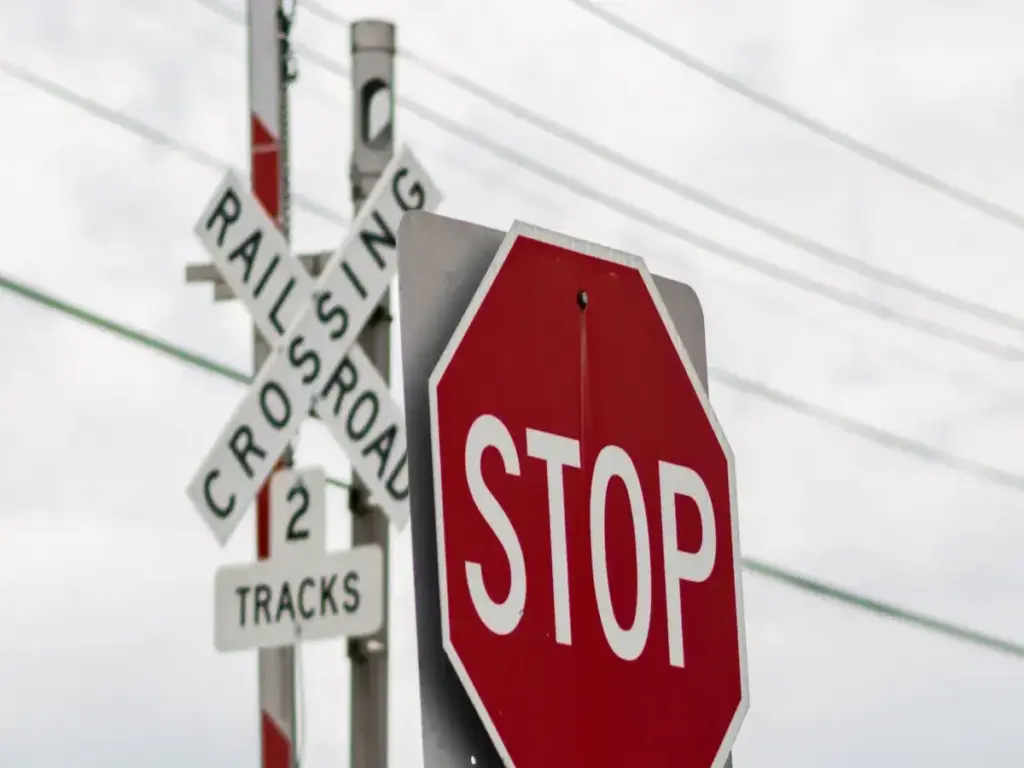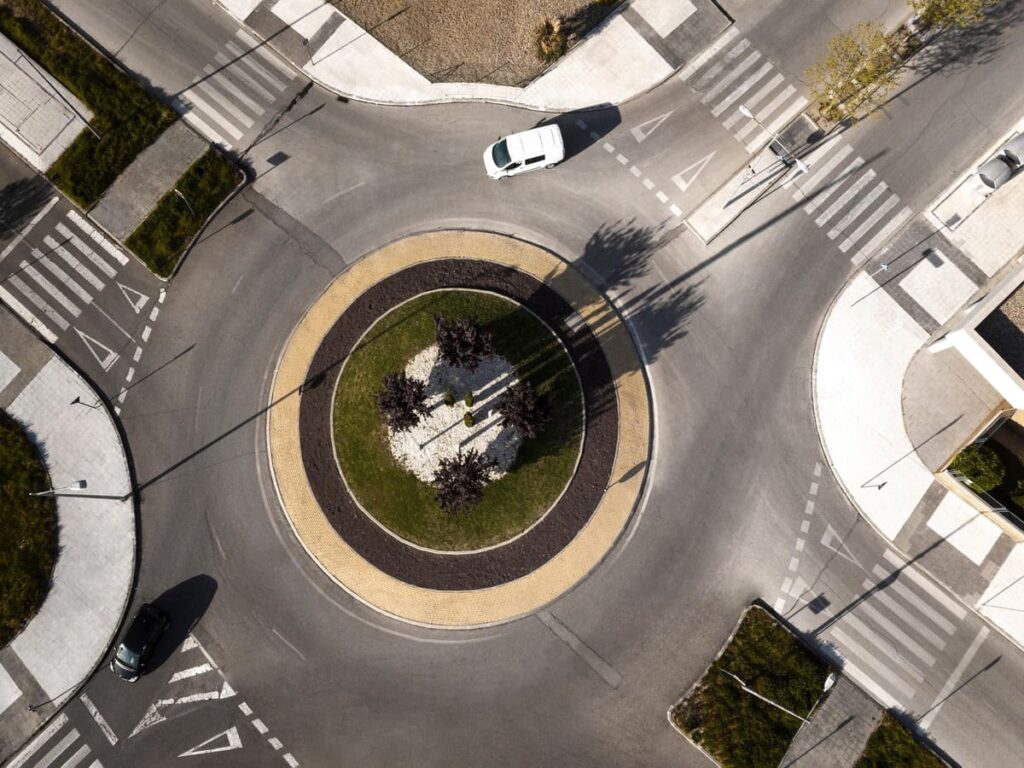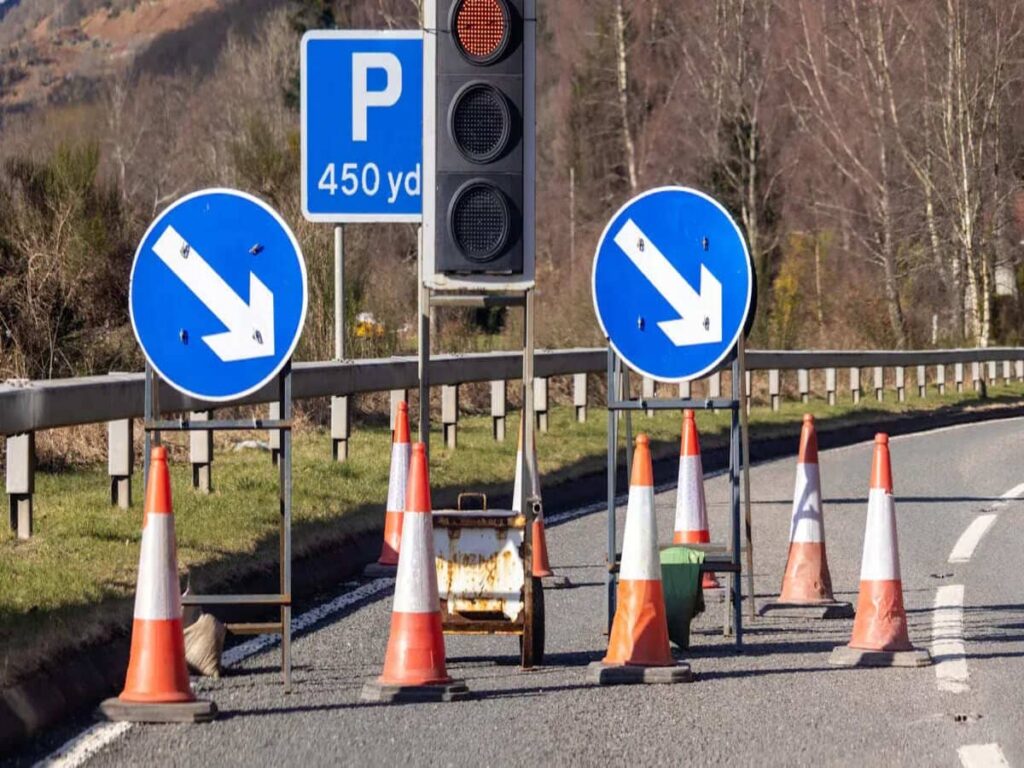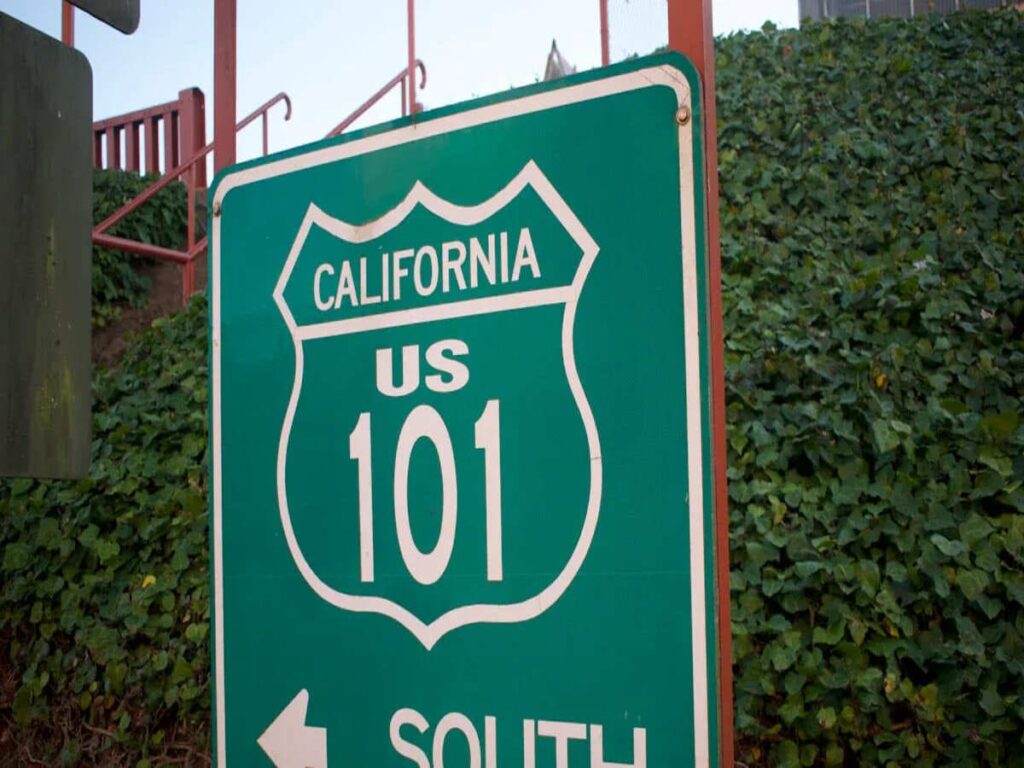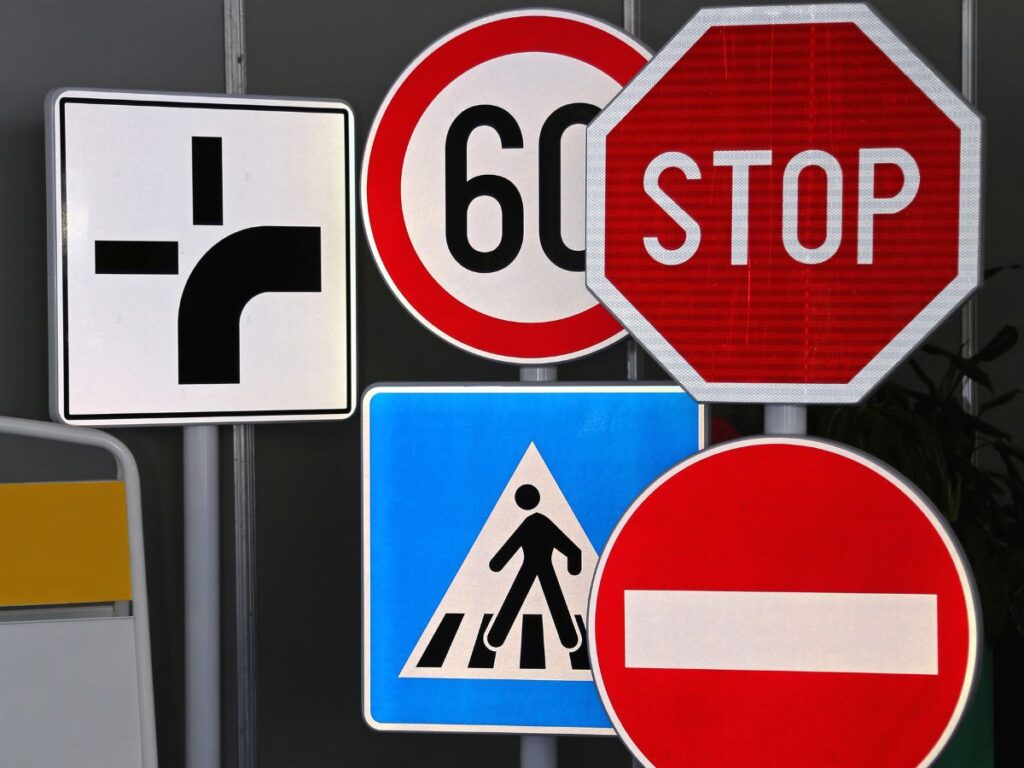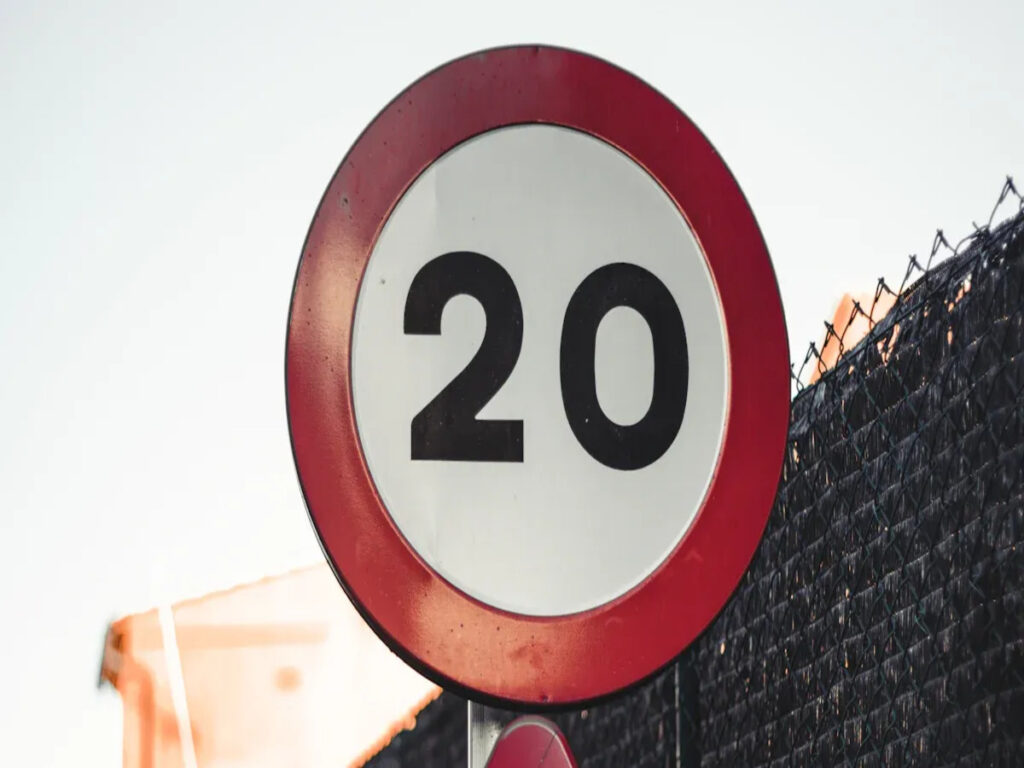
ほとんどの国のように、KPHの代わりに英国の道路標識でMPHを見る理由を疑問に思ったことはありませんか? 英国で運転するとき, 速度制限は時速マイルを使用していることに気付きます. ほんのりです 9% 世界中の国々は、道路標識でMPHを使用しています, 残りは時速キロメートルを使用します. この選択により、速度を読み、英国の道路のルールに従う方法を形作ります. MPHの使用は、運転体験に影響します, 特に海外から訪問する場合. あなたは安全を維持し、混乱を避けるために明確な速度制限標識に依存しています.
オプトラフィックにて, 私たちは、明確で正確な制限速度標識の重要性を理解しています. 時速マイルか時速キロを使用しているか, 私たちの 交通標識 ドライバーがルールを簡単に遵守し、道路上で安全を確保できるように設計されています。. 当社の高品質交通標識のラインナップをご覧ください, 各国の規制の特定のニーズを満たすように調整.
マイル/時の歴史
帝国制度の起源
英国で運転するとき, 制限速度標識は時速マイルを示します. これはずっと前に始まりました. で 1593, イングランドは法定マイルを公認した. このマイルは大英帝国で距離を測定するために使用されました. 帝国が成長するにつれて, 植民地までは時速何マイルもかかりました. かつてイギリス領であった多くの国では、今でも制限速度に時速マイルが使用されています。.
大英帝国は英国やその他の地域の道路法と速度規則を形成しました. これは米国と一部のカリブ海諸国で見られます. 他のほとんどの国ではメートル法が使用されており、速度は時速キロメートルで表示されます。. 英国は道路標識に帝国主義を維持したため異なります。, 他の分野ではメートル単位が使用されている場合でも、.
注記: ローマ帝国も距離を測るのにマイルを使用していました. この古い測定方法は英国の規格の形成に役立ちました. それは今日の速度制限と長い歴史を結びつける.
英国の法律と道路標識
なぜ英国では依然として速度標識に時速マイルを使用しているのか疑問に思うかもしれません。, 他の領域での計量を行った後でも. 答えは英国の法律と道路交通規制にあります. いくつかの重要な法律では、制限速度は時速マイルで表示する必要があると定められています.
- The 道路交通規制法 1984 速度制限標識の規則を定める.
- セクション 85 交通当局は、以下に説明されているように速度制限標識を設置し、管理する必要があると述べています。 交通標識の規制と一般的な指示 2002.
- 規制 5 制限速度は時速マイルだと言う, 含む 70 高速道路では時速マイルで、 60 単一車道で時速マイル.
- セクション 81 そして 82 規制された道路を設定し、 30 MPH速度制限, マイル/時を正式な単位にする.
- トラフィックサインの規制と一般的な指示 2002 速度制限標識のデザインと使用について詳しく説明する, 常にマイル/時を使用.
すべての速度制限標識に時速が表示されるのは、これらの法律によって定められているためです。. 英国は 1960 年代と 1970 年代に計量プログラムを開始しました, しかし速度制限をメートル単位に完全に変更することはなかった. 政府は制限速度を時速キロメートルに変更することを計画していた 1973. この計画はで中止されました 1970 そして二度と始めなかった. それで, 英国は制限速度を守るために時速マイルを守った, 他のものはメートル単位に移行しましたが、.
英国における計量基準は、強力なリーダーシップなしにゆっくりと行われました. 政府は道路標識にメートル法を強制しなかった. 欧州の影響に関する公の議論と懸念により、時速キロへの変更は不人気になった. 制限速度標識は依然として時速マイルで表示されます, タコグラフやスピードリミッターなどは km/h を使用することが多いにもかかわらず. 英国で登録された車両 1977 速度計には時速マイルと時速キロメートルの両方を表示する必要があります, しかし、法定速度と道路標識は依然として時速マイル単位です.
時間とともに, 英国の交通政策が道路の安全性を高めるために制限速度を変更. エディンバラやベルファストのような都市では、 20 人々を守るためのマイルゾーン. これらの変化は英国が道路をより安全にしようとしていることを示している, ただし、標準として時速マイルを常に維持します. 英国の速度制限標識の歴史には多くの重要な瞬間がある:
- 機関車法 (1866-1896) 非常に低い速度制限を設定し、車両の前を歩くには赤旗を持った人が必要だった.
- 初めてのスピード違反有罪判決は、 1896 運転手が上を通ったとき 2 時速制限.
- 自動車協会が発足したのは、 1905 ドライバーが警察のスピード違反取締りを回避できるようにするため.
- で 1930, 英国は人々が速度制限を無視したため、車とオートバイの速度制限をすべて撤廃した.
- 新車にはスピードメーターが必須となった 1937.
- 警察は1980年代後半にレーザースピードガンを使用し始めた.
- 最初のスピードカメラが使用されたのは、 1991.
- で 1992, 新しい法律により、訴追のために無人交通カメラの使用が許可された.
英国には速度制限と速度制限標識に関して長く特別な歴史があることがわかります。. 伝統, 英国の法律, 道路交通規制は時速マイルを維持することが英国の道路法の中心です. メトリクスは多くのことを変えました, しかし、英国の道路での速度の読み方は異なります.
制限速度標識と交通安全
一貫性と明確さ
英国で車を運転するときは常に速度制限標識を頼りにしています. これらの標識では時速マイルが使用されています, どれくらいの速度で走るべきかを知るのに役立ちます. 赤い丸の中に数字が表示されます, それらを簡単に見つけることができます. ヨーロッパの看板にもマッチするデザインです, しかし、英国では時速キロメートルの代わりに時速マイルを使用します. すべての道路標識にはマイルやヤードなどの帝国単位が表示されます, これが英国を他のほとんどの国とは一線を画すものです.
英国は時速マイルを使用します (MPH) 速度制限標識について, 時速キロメートルを使用するほとんどのヨーロッパ諸国とは異なります (時速キロメートル).
明確で一貫した制限速度標識は迅速な意思決定に役立ちます. どこでも同じスタイルの看板を見かけたとき, あなたは混乱しないでください. GD 904 Highways England によるガイドラインでは、明確な標識と道路標示が安全に案内していると記載されています. これらのルールは道路レイアウトに関するデータを使用します, 渋滞, 過去の事故を考慮して標識を設置する場所を決定する. 道路工事では一時的な速度制限が設けられたり、高速道路では可変速度制限が設けられたりすることもあります。. これらは常にマイル/時を使用します, それで何が起こるかわかります.
- イギリスの速度制限標識:
- 赤い円の中にマイル/時を表示します
- 同じデザインを永久的に使用してください, 一時的, および可変制限
- 迅速かつ安全に速度を調整できるようにします
事故削減への役割
速度制限標識は安全を守る上で大きな役割を果たします. 明確な兆候が見えたら, 各道路の適切な速度を知っています. これにより、速度が速すぎたり遅すぎたりするのを防ぐことができます. 研究によると、ドライバーは現実的な制限速度をよりよく守ることがわかっています. 例えば, a 60 道路工事における時速制限は、はるかに低い制限よりも効果的です. 自信がつき、リスクを冒す可能性が低くなります.
作業区域内の一時的な速度制限標識は、国の厳格な規則に従っています。 交通標識マニュアル. これらのルールにより、標識が見やすく、常に同じように見えるようになります。. これらの標識に従うと、, 交通をスムーズに保ち、道路作業員を保護するのに役立ちます. 可変速度制限では、リスクチェックを使用して、状況の変化に応じて安全な速度を設定します. これにより全員の安全が確保され、事故が減少します.
英国の道路制限速度は安全性を重視していることがわかります。, 明確さ, 適切な速度での運転をサポートします. すべての速度制限標識で一貫してマイル/時を使用することで、制限が何であるかを常に把握できます。, no matter where you drive.
日常の運転で時速マイル
車の速度計
イギリスで車を運転するとき, スピードメーターにはマイル/時が表示されます. ほとんどの車両は速度を主単位として時速マイルで表示します。. これは道路上で見られる制限速度標識と一致します. 数値を変換したり、走行速度を推測したりする必要はありません. 車と道路標識が同じシステムを使用しているため、毎日の運転が簡単に感じられます.
一部の車は時速キロメートルで速度を表示します, ただし、マイル/時は常に主要な数値です. これは、間違いを避けるのに役立ちます. 速度をすぐに確認し、制限内にとどまることができます. 他国の車を運転する場合, 最初は混乱するかもしれません. 正しい速度に従っていることを確認するために特別な注意を払う必要があります.
英国が時速キロメートルに切り替えることを決定した場合, どの車両にも新しいスピードメーターが必要になる. そうなると莫大な費用と時間がかかります. 交通当局もすべての道路標識を変更する必要があるだろう. 新しい看板の費用, マーキング, そして強制力は高くなるだろう. 地方議会は時々新しいものにお金を使う 20 適切に機能するかどうかを確認せずに時速スキームを実行する. これにより、お金が無駄になり、安全性がほとんど向上しない可能性があります.
すべての速度制限標識と速度計を変更することは、交通当局にとって大変な仕事になるだろう. 混乱を引き起こし、移動速度が遅くなる可能性があります, 特に忙しい道路で.
ドライバーの精通度
すべての道路標識や速度計で時速を確認することに慣れています。. これにより、運転が正常かつ安全に感じられます. 英国のほとんどのドライバーは時速マイルを日常生活の一部として受け入れています, たとえそれが古臭いように見えても. 高速道路には通常、 70 時速制限, 他の道路には、 60 時速制限. このルーチンは、迅速な決定を下し、ルールに従うのに役立ちます.
kmph に切り替えることは、新しい数値と習慣を学ぶことを意味します. 多くの人はこの変化を望んでいません. 世論の反対は強い, 数千人が新たな速度制限に反対する請願書に署名. 一部のドライバーは制限値が低いことを心配しています, のように 20 MPH, 交通量を減らして移動を長くする. 救急サービスも遅延の懸念を引き起こす.
マイル/時は単なる数字ではないことがわかります. 英国では毎日の運転方法の一部となっています. システムが機能するのは、何が起こるかを知っているからです, 交通当局は一貫性を保つ.
海外のドライバーと制限速度
時速マイルに適応する
時速キロメートルを使用する国から来た場合, イギリスの道路で制限速度が時速マイルで表示されると混乱するかもしれません. 数字が違うように見える, しかし、実際の速度は多くの場合同様です. 例えば, a 30 英国の時速制限はほぼ 50 ヨーロッパの多くの都市では時速制限. それを覚えておく必要があります 1 時速マイルは約 1.6 時速キロメートル. この違いにより、どれくらいの速度で運転すべきかを判断するのが難しくなることがあります, 特にスピードメーターで時速キロを見ることに慣れている場合は.
これは、英国と他のヨーロッパ諸国の一般的な道路制限速度を比較するのに役立つ表です。:
| 場所の種類 | 英国の制限速度 (MPH) | 英国の制限速度 (時速キロメートル) | 一般的なヨーロッパの制限速度 (時速キロメートル) |
|---|---|---|---|
| 都市部 | 30 | 48 | ~50 |
| 単一の車道 | 60 | 97 | 80-100 |
| 高速道路 | 70 | 113 | 120-130 |
変換すると、制限はそれほど変わらないことがわかります。. 主な課題は、数字と速度の表示方法に慣れることです.
訪問者へのヒント
いくつかの簡単なヒントを使えば、英国での運転が楽になります. 初め, 車のスピードメーターを確認してください. 多くの車は時速とマイルの両方を表示します, ただし、1 つだけを表示するものもあります. 時速キロしか見えない場合, 制限速度を頭の中で変換する必要がある. マイル/時数値を乗算します 1.6 時速キロ単位で速度を取得するには.
ヒント: テクノロジーを活用して支援する. 多くの GPS システムや、Waze や Google マップなどのモバイル アプリは、現在の制限速度を表示し、速度を出しすぎると警告します。.
旅行前に英国の公式運転ハンドブックを読むか、政府のウェブサイトにアクセスしてください。. これらのリソースは道路の速度制限について説明しています, 交通標識, 英国での運転ルールと. 何が起こるかを理解し、安全を確保するのに役立ちます.
- 外国人ドライバー向けの役立つリソース:
- 速度制限警告機能付き GPS ナビゲーション システム
- リアルタイムの速度データを備えたモバイルアプリ
- 英国の公式運転ハンドブックと政府ウェブサイト
ルールを理解し、適切なツールを使用すると、, 安全かつ自信を持って運転できます. 少し準備をしておけば、時速マイルや英国の道路制限速度に適応することがはるかに簡単になることがわかります。.
英国の速度制限の将来
kmphへの切り替えに関する議論
イギリスが時速マイルから時速キロメートルに変わることがあるのか疑問に思うかもしれません. この議論は何年も続いた. 時速キロに切り替えると旅行が楽になるという人もいます, 特にヨーロッパからの旅行者にとっては. コストと混乱が大きすぎると考える人もいる. メートル法とは、ヤード・ポンド法単位からメートル法単位に変更することを意味します. 英国は 1960 年代に計量を開始しました, しかし、道路交通規制は制限速度を守って時速1マイルを守っていました.
店舗や学校では計量が行われています, ただし速度制限標識ではない. 時速キロに変更すると新しい兆候が現れる, 新しいスピードメーター, そして新しいルール. 地方議会と政府は多額の費用を費やす必要がある. ドライバーは速度を上げるために新しい数値を学習する必要がある. 多くの人は、この変更が間違いを引き起こし、安全性に影響を与えるのではないかと心配しています。. 計量法は道路交通規制の更新とドライバーの再訓練も意味する.
注記: メトリクスは単に数値を変更するだけではありません. 運転の仕方に影響する, 標識をどう読むか, そして法律をどのように遵守するか.
世論
誰もが時速を維持したいと思っているかもしれません, しかし意見はまちまちです. 最近の世論調査によると、多くの人が都市部の速度制限の緩和を支持している. 地元当局はこう言っている 30 一部の道路ではマイル制限が高すぎます. もっと見る 20 町や都市のマイルゾーン. これは、人々が安全性を重視し、より安全な道路を望んでいることを示しています.
こうした議論では、速度制限ほどメートル法が取り上げられることは少ない. ほとんどの人は車はどれくらいの速度で走るべきかについて話します, どの単位を使用するかではありません. まだ, 一部のドライバーは変更を望まない. 彼らは時速マイルに満足しているが、測定が行われた場合の混乱を心配している.
測定は複雑な問題であることがわかります. 速度に影響します, 安全性, そして日常生活. 英国は将来的に計量基準について再び議論する可能性がある, しかし今のところ, 制限速度の標準は依然として時速マイルです.
イギリスの道路標識には時速が表示されているのは伝統によるものです, 法, そして日々の練習.
- イギリスは帝国単位を使用します, そのため、制限速度は時速マイルで表示されます.
- 法律と高速道路法規では、すべての道路標識に時速マイルが必要です.
- 道路標識は速度計に表示されるものと一致します, 運転を楽にする.
キロ時速への変更についての議論は続く. 安全性を重視する人が多い, しかし世論は依然として複雑だ. 以下であなたの考えを共有してください - あなたは時速マイルの方が好きですか、それとも英国は時速に切り替えるべきだと思いますか?
交通標識規制が交通安全と標識基準の将来をどのように形作るかについてより深く理解するため, ブログをご覧ください, TSRGDの理解 2016 そして、それが販売のための交通標識にとって何を意味しますか.
よくある質問
なぜ英国では道路標識に時速マイルが使われているのか?
イギリスの道路標識に時速が表示されるのは歴史と法律のせいです. 英国はずっと前に時速マイルを選択しました. 政府はこのルールを変更していない. 英国のほとんどのドライバーは時速マイルで快適に感じています.
イギリスの制限速度標識に時速キロが表示されることはありますか?
イギリスの制限速度標識には時速キロは表示されません. すべての公式速度制限はマイル/時を使用します. 一部の車のスピードメーターには両方の単位が表示されます, しかし、道路標識は常に時速マイルを使用します.
マイルを時速に素早く変換するにはどうすればよいですか?
マイル/時速の数値を掛けることができます 1.6 時速を取得するには. 例えば, 30 マイル/時は約 48 時速キロメートル.
ヒント: 携帯電話の電卓または GPS アプリを使用して高速変換します.
英国の道路標識を時速キロに切り替える計画はありますか?
kmphへの切り替えについての議論を聞くかもしれません. 政府には現時点で変更の計画はない. 英国のほとんどの人は時速マイルを好みます. 変えるとお金もかかるし時間もかかる.
外国人ドライバーが英国で運転する際にすべきこと?
運転する前にスピードメーターを確認する必要があります. 多くの車は時速とマイルの両方を表示します. GPS またはアプリを使用して速度制限を緩和する. 常に道路標識の番号に従ってください.

